As a leader and decision maker, you’ve developed an extra sense for detecting hype and nonsense. You’ve gotten pretty good at separating fact from fiction. But when it comes to technology, it’s easy to fall for outdated or just plain wrong ways to looking at its role in a company. Let’s be honest. Have you found yourself believing one of these 5 persistent myths of business technology?
Myth #1: Technology is the responsibility of my IT department
Running a business is a substantial responsibility. No one person can manage every aspect of a growing organization. So as it grows and more specialists join the team, leaders delegate tasks to the right person or department. Billing, invoicing, receipts, those are handled by bookkeeping. Delivering your product or service, that is handled by your team. Hiring policies, employee handbooks, benefits management, that is handled by HR. When decisions need to be made, team members research the problem and possible solutions, then bring the information to you for a decision.
So, technology is delegated to the IT department. Right? After all, a qualified IT professional knows about the latest tech trends. If you ask a specific question, they can research it and give you an informed opinion. And, if all you need your IT department to provide is a stable, reliable IT environment, then stepping back and trusting them to do their job is a safe bet.
On the other hand, if you want to use technology to gain a competitive edge, then a completely hands-off approach won’t produce results. And, if you aren’t convinced that new tech can help you get ahead, consider these facts. Digital ready companies are more efficient, have better revenue growth, better product quality, more satisfied customers, and more engaged employees.
The problem is that in many cases, IT leaders focus on the latest, greatest software they just read about, not the organization’s objectives. Sometimes, they’re not to blame, as they aren’t included in discussions about the bigger picture and long term goals. But, IT leaders acting in isolation invest in technology for technology’s sake. You can’t afford investments that don’t live up to their promises. You need tools that help you do more with less and directly help you achieve important goals. In the end, this myth can lead to disjointed technology plans that don’t align with goals.
Debunking this myth doesn’t mean you can’t seek the advice of IT experts. Instead, the answer is to participate in technology planning with IT leaders. Decision makers think about the big picture and the future. They set goals, define brand values, and are aware of the challenges and obstacles to achieving business objectives. When IT leaders are aware of the big picture, they can design solutions that help you achieve your goals.

Myth #2: Technology is the answer to everything
AI, advanced computing, digital reality, blockchain, sensor networks – most of that stuff is intriguing and sounds like it could transform your business. But, many companies don’t have the capital to invest in huge development projects. Yes, technology can solve a lot of problems, but we have to be pragmatic. It isn’t the answer if the cost outweighs the benefit.
Even if you’re not a mega corporation, you can be forward-thinking. Cloud, Enterprise Resource Planning Tools (ERP), Customer Relationship Management (CRM), automation, enhanced security, using technology to be more efficient, and streamlining operations – these sorts of technologies are cost-effective and accessible to all organizations. And they shouldn’t be overlooked. They can each make a huge impact on productivity and profitability within weeks of implementation, not 10 years from now.
But, beware. None of these things are answers in and of themselves. Just moving to the cloud isn’t the answer. Nor is buying a more expensive software package, using a CRM, upgrading to a faster server, or sending automated emails.
Not only is it critical to consider what problems you need to solve and what your business goals are, but with limited resources, leaders need to consider which investments are most likely to pay off. There are two questions that leaders can consider to help them make less risky decisions. And, they can also help leaders make decisions that are more likely to impact the bottom line.
- How does the business fundamentally create value for its customers?
- What technologies could help increase and improve that value?
Even if technology can improve a process, it doesn’t mean that it’s going to produce dividends for the company. But, by asking these questions, decision makers can focus on where it will be most valuable and competitive.

Myth #3: Technology is more important than strategy
Technology without strategy is pretty useless. But too often, owners and CEOs invest in expensive applications or new hardware, thinking this will change everything. But if you haven’t thought out how you’ll use a specific software or system to meet goals and developed a roadmap you can follow, you’ll just wind up spending money.
Technology can’t exist in a vacuum – technology and strategy go hand in hand. So instead, think about how you’ll use it for optimizing your processes, entering new markets and reimagining & transforming what you do.
Optimization
New systems don’t have to fundamentally change what you offer to your customers. You can use technology to become more efficient, faster, and more reliable at things you already do. When used for optimization, new systems can enhance what you’re already doing and who you already are to your customers.
Entering New Markets
Developing new products and services to enter new markets is challenging. You need to build knowledge, skills and relationships to make it happen. Without abandoning the activities that pay the bills, you’ll need to devote time to research, ideation, design, testing and sourcing materials. The investment can be risky and expensive. But, thanks to technology, research and development can be done faster and easier. In the end, this can level the playing field between smaller and larger companies for getting into new markets.
Creating, Reimagining & Transforming
Sometimes, the best ideas aren’t something completely new, but rather innovative ways of delivering familiar products or completely new ways to provide a service. Most anything you can do online is a great example of this type of innovation. Banking, watching movies and shopping were all products and services people used before the internet. But, now they have been transformed, so we can access them from home.
Myth #4: my company should copy my competitor's technology
You may be a small fish in a big pond. But you’ve never been afraid to take on much bigger competitors who have more ample resources. But being competitive doesn’t always mean doing what the big fish are doing. Because at the end of the day, customers don’t want to be dazzled. They want consistency. They want to give their money to companies who care. And the cumbersome infrastructure and over-reliance on fancy technologies in big companies often get in the way of this. They make big companies seem faceless and a dime a dozen.
It’s actually the practical, down-to-earth technologies that can help you build customer loyalty to elbow out the competition. They help you stand out and have a bit of a personality as a business.
This isn’t to say that you don’t watch what your big competition is doing. You need to evolve and grow, and don’t want your business to look identical 10 years from now. But quite often, trying to emulate big companies with different resources and challenges will send you down the wrong path of spending too much money on technology and initiatives that aren’t actually going to help you resonate with customers and streamline operations.
Businesses often compete against bigger competitors, and it is so easy to want to do what they’re doing and having success with. But, then when you do, you lose an opportunity to stand out.
It’s great to learn from others and to evolve and learn and grow constantly. But don’t just blindly do everything others are doing. Instead, examine how they use technology as ideas and starting points. Then, combine the learnings with your own ideas and to come up with a unique solution that fits your goals and makes your business unique.

Myth #5: Newcomers will disrupt established companies and put them out of business
This myth persists because startups can disrupt the markets, knocking large, seemingly stable companies off-kilter. That’s because businesses can be like a cruise ship. It’s hard for them to shift course or turn around. Being profitable requires the coordination of many different departments. In addition, leaders and shareholders are often reluctant to shift resources from activities that currently generate profits to activities that aren’t proven to produce results.
At the same time, disruptions and brand new products and services have the potential to be far more profitable than today’s products. The good news is that established businesses often have resources that newer ones don’t have access to. These can include reliable cash flow, access to capital, customers, data, expertise and more.
Where newcomers have the advantage is they have a blank slate. They don’t have to maintain existing processes until new ones are developed, or overcome resistance to change. They also have nothing to lose, and are more open to embrace new technologies.
That doesn’t mean established companies can’t win over newcomers, or overhaul old ways of getting things done. It does mean that leaders need to continually seek improvement and ask if there are better ways to do what they do.
In fact, the key difference is leaders who are willing to challenge today’s status quo and consider newer, better ways of doing business. It doesn’t have anything to do with business size or age.
Just follow the 6 Business Keys to Technology Success:
#1 – Focus on the business impact, not the tech itself. We tell our clients to evaluate their goals first. Then look at how to achieve them, not the other way around.
#2 – Don’t confuse experimentation with strategy. You can’t afford to experiment. Collect and use real-world data, then make decisions based off conclusions drawn from the data. Also, don’t overthrow entire systems at first. Start small, with projects that won’t make or break the business. Evaluate the results, and apply the lessons to the next initiative.
#3 – Constantly develop and evolve your strategy – be willing to change rapidly. Technology is changing and evolving at a record pace. To remain relevant and competitive, you must continually evaluate and evolve the strategy. At times, you may even need to abandon strategic choices that are not working or are no longer applicable to the changing environment.
#4 – Continually monitor your market, don’t forecast. Maintain awareness of what’s going on, and continually adapt applications, systems and hardware to keep yourself on track.
#5 – Work together with others. New technologies come on the scene at a dizzying speed. You can’t afford to learn and implement all of them. Partnering with other companies allows you to combine strengths, as well as mitigate the risks associated with new investments.
#6 – Get everyone on board with technology initiatives. Lack of buy-in is a major reason so many implementation plans fail. Get people on board by communicating why changes are needed and what you will accomplish together. Then, ask for input from different disciplines for how you can achieve the goals.
Southeastern Technical Understands Business and Technology
Technology, when used strategically, has the potential to bring big rewards to your business. Whether you need to increase productivity, improve service quality or get help implementing a vision, Southeastern Technical is your ideal IT partner. With over 20 years of experience in providing technical leadership to business, we can help you navigate the challenges of implementing new technologies to accomplish your objectives. Reach out to discuss your specific business needs and explore solutions that meet your objectives.






